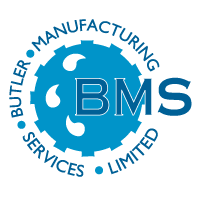Sewage Parameters 4 Part 2: Phosphorus (P)
Introduction
Continuing our discussion on Phosphorus (P) in wastewater treatment, we’ll now focus on practical methods to reduce P levels, especially in package sewage treatment systems.
Effluent Standards for Phosphorus
Effluent standards often specify Total Phosphorus (TP) levels between 0.5–5 mg/l. Achieving these levels requires a combination of source control, natural reduction, and targeted treatment processes.
Methods for Reducing Phosphorus
1. Source Control
Identify Specific Causes:
Example: In a hotel that launders its own linens, switching to low-phosphorus detergents can significantly reduce influent and effluent P levels.
2. Natural Reduction
Primary Settlement:
Some Phosphorus is adsorbed onto Suspended Solids (SS).
Settling SS in the primary settlement area of a treatment plant like the Blivet naturally reduces P to a small extent.
3. Biological Processes
Bardenpho Process or Denitrification:
These advanced biological methods can reduce P as part of nitrogen removal processes.
4. Chemical Dosing
Ferric Sulphate (FeSO₄) Dosing:
The most common and effective method for P reduction in package sewage treatment systems.
How it Works:
FeSO₄ reacts with P in sewage to form a flocculent, which settles into the sludge.
Dosing Implementation:
Systems like the BMS Blivet can be fitted with a dosing pipe directly into the primary settlement area, allowing for precise and safe dosing.
Considerations and Drawbacks of FeSO₄ Dosing
Health and Safety:
FeSO₄ is a hazardous chemical and requires:
Proper storage (e.g., in an IBC within a bunded area).
Adequate health and safety precautions during handling.
Risk of Overdosing:
Overdosing can:
Kill the biofilm in biological systems like the BMS Aerotor, impairing sewage treatment.
Cause significant delays in system recovery.
Increased Sludge Volume:
FeSO₄ dosing increases sludge bulk by 20–25%, reducing intervals between desludging.
Adequate allowance for sludge handling is necessary to avoid operational issues.
Sample Calculation for FeSO₄ Dosing
A sample calculation would involve:
Estimating the influent P concentration and target effluent P level.
Determining the FeSO₄ dosage required based on the molar ratio of Fe and system flow rate.
Phosphorus reduction is a critical aspect of wastewater treatment, and FeSO₄ dosing provides an effective solution for meeting stringent effluent standards. However, it must be managed carefully to avoid operational challenges and safety risks.
Next Topic
In the next post, we’ll discuss Ammonia (NH₄) and its role in wastewater treatment systems.
Questions?
If you have any queries or need information on package wastewater treatment products, feel free to contact us. We’re happy to assist!
About BMS
BMS is a quality manufacturer of package products for wastewater and stormwater treatment:
Established: 1986
Global Reach: Exported to over 50 countries.
Family Business: A third-generation company with deep expertise.
BMS Product Range
BMS provides a wide array of surface water and wastewater treatment products, including:
View the full product catalogue here
Additional Services by BMS
Free Design Service: For sewage treatment, pump stations, and surface water management.
Operation and Maintenance: Full services for existing installations, including repair, advice, and testing.
Free CPD Presentations: Available for sewage treatment and surface water management, delivered at your location.
We would be delighted to discuss any requirements you might have, and we are available to meet you at your convenience. Contact us today.
© Butler Manufacturing Services 2024.


